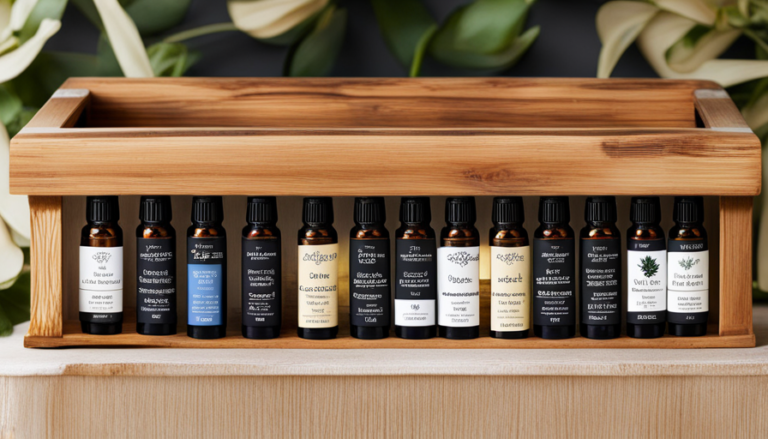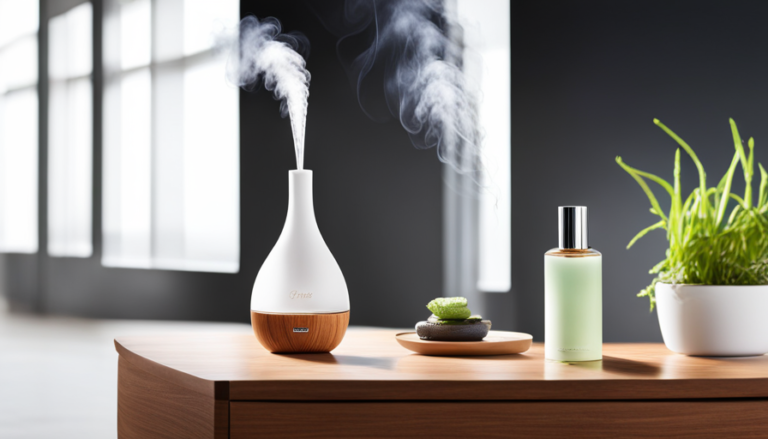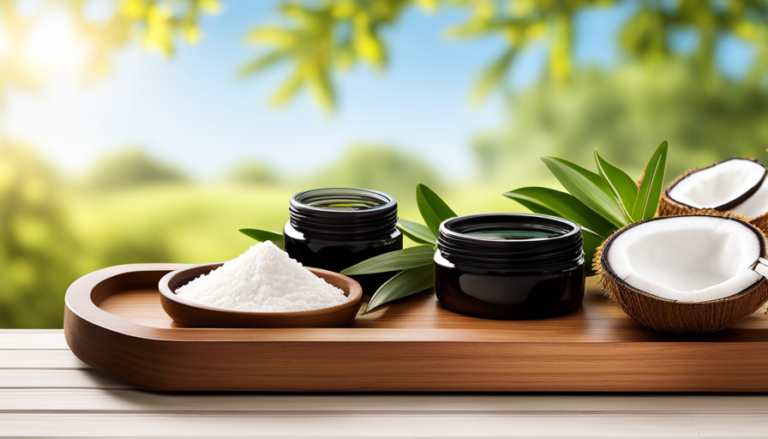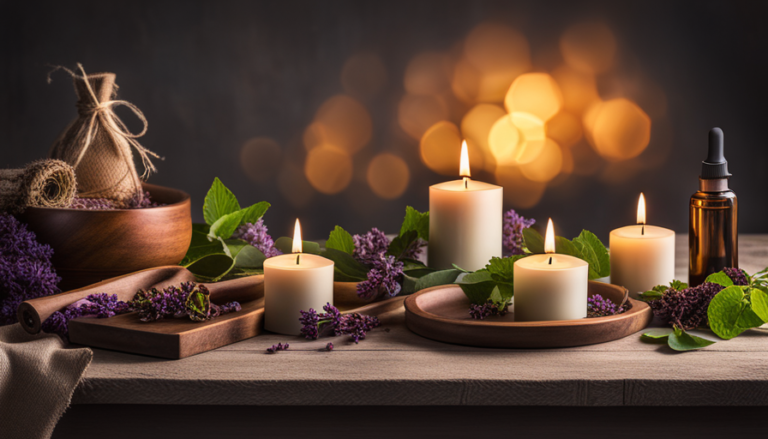How Much Essential Oil To Add To Soy Candles

Are you ready to infuse your home with the soothing scents of essential oils? Creating your own soy candles allows you to customize the fragrance and ambiance of any space.
But how much essential oil should you add for the perfect balance? In this article, we will guide you through finding the ideal dilution ratio, considering different types of essential oils, and conducting tests to ensure a safe and satisfying experience.
Get ready to immerse yourself in the art of candle-making and create a fragrant haven in your home.
Key Takeaways
- Gradually increase or decrease the amount of essential oil to adjust the scent strength.
- Choose an essential oil based on preference and desired atmosphere.
- Test different scent strengths to achieve desired intensity.
- Follow safety precautions and best practices when handling essential oils and storing candles.
Understanding Soy Candles and Essential Oils
Understanding soy candles and essential oils can be helpful when determining how much oil to add. Soy candles are made from soy wax, which is derived from soybean oil. They are known for their clean burn and ability to hold a scent well.
Essential oils, on the other hand, are highly concentrated plant extracts that provide fragrance. When adding essential oils to soy candles, it’s important to consider the dilution ratio. This ratio determines the amount of essential oil needed in relation to the amount of wax used.
The scent strength desired also plays a role in determining how much oil to add. Finding the right dilution ratio ensures that your candle has a pleasant aroma without overpowering or underwhelming the senses.
As you move into finding the right dilution ratio section, it’s important to keep these factors in mind.
Finding the Right Dilution Ratio
When it comes to finding the right dilution ratio for your soy candles, it’s important to start with a small amount of essential oil. This allows you to gauge the strength of the scent and make adjustments as needed.
By starting small, you can gradually increase or decrease the amount of essential oil until you achieve the desired scent strength for your candles.
Start with a Small Amount
To start, you should add a small amount of essential oil to your soy candles. It’s important to begin with a testing phase to determine the ideal fragrance strength for your candles. By starting with a small amount of essential oil, such as 1-2% of the total wax weight, you can gauge the potency of the scent and make adjustments accordingly. This approach allows you to find the perfect balance between a subtle aroma and an overpowering fragrance.
Nested Bullet Point List:
-
Sub-list 1:
-
Discovering the right dilution ratio is crucial for achieving optimum scent throw.
-
Starting with a small amount helps prevent wasting expensive essential oils during experimentation.
-
Sub-list 2:
-
Testing different quantities also enables you to assess how long the scent will last when burning.
-
Gradually increasing or decreasing the essential oil content allows for fine-tuning based on personal preference.
By beginning with a small amount, you can carefully evaluate and adjust the scent strength until it suits your desired level of fragrance without overwhelming your space.
Adjusting the Scent Strength
Start by gradually increasing or decreasing the amount of fragrance you use in your soy candles to adjust the strength of the scent. Finding the perfect scent intensity control allows for fragrance customization and ensures that your candles are just right for your preferences. Here’s a table to help guide you:
| Amount of Essential Oil | Scent Strength |
|---|---|
| 1 teaspoon | Light |
| 2 teaspoons | Medium |
| 3 teaspoons | Strong |
By starting with a small amount and adjusting as needed, you have full control over how strong or subtle you want your candle’s aroma to be. Once you have determined the desired scent strength, it’s time to consider the type of essential oil that will best complement your soy candles.
Considering the Type of Essential Oil
Choose an essential oil based on your preference and add the recommended amount to your soy candles.
When choosing a fragrance, think about the mood or atmosphere you want to create. Some popular options include lavender for relaxation, citrus for energy, and vanilla for warmth.
If you prefer a unique scent, consider blending oils together to create a custom fragrance that suits your taste. Experiment with different combinations until you find the perfect blend.
Keep in mind that each essential oil has its own recommended usage rate, usually expressed as a percentage of the total wax weight. It’s important to follow these guidelines to avoid overpowering the candle or causing any safety issues.
With the right type of essential oil and proper measurements, you can create beautifully scented soy candles that fill your space with delightful aromas.
Next, let’s move on to testing and experimenting with different scent strengths before finalizing your recipe.
Testing and Experimenting
Once you have selected your preferred fragrance, it’s time to test and experiment with different scent strengths for your soy candles. Testing the amount of essential oil to add is crucial in achieving the desired scent intensity. There are various testing methods you can try to find the perfect balance. One method is the "sniff test," where you burn a small sample candle and evaluate its fragrance strength. Another approach is using a 2 column and 3 row table to document different fragrance combinations and their corresponding scent levels. This visual representation allows you to easily compare and track your experiments. By carefully noting each combination’s results, you can adjust the amount of essential oil until you achieve the ideal scent for your soy candles. Once you have completed this testing phase, we will move on to discussing safety precautions and best practices for candle making without compromising fragrance quality.
Safety Precautions and Best Practices
When handling essential oils, it’s important to prioritize safety. Always wear gloves and protective eyewear to avoid direct contact with the oils, as they can cause skin irritation or allergic reactions.
Additionally, ensure that you store your candles in a cool and dry place, away from direct sunlight and heat sources. Label them properly to indicate their ingredients and any potential hazards.
Taking these precautions will help maintain the quality of your candles while keeping you safe during the process.
Handling Essential Oils Safely
To ensure safety, it’s important to handle essential oils correctly when making soy candles. Safely diluting essential oils is crucial to prevent skin irritation or other adverse reactions. Always follow recommended guidelines for dilution ratios, which typically range from 1% to 5%. This means adding approximately 20 to 100 drops of essential oil per ounce of melted wax.
Proper handling of essential oils also involves wearing gloves and protective eyewear, as some oils can be irritants or sensitizers. Avoid direct contact with the skin and eyes, and never ingest essential oils.
It’s important to store essential oils in a cool, dry place away from direct sunlight and keep them out of reach of children and pets. With these precautions in mind, let’s move on to the next section about proper storage and labeling of candles.
Proper Storage and Labeling of Candles
Remember to store your candles in a cool, dry place and label them properly for easy identification. Proper storage is crucial to maintain the quality of your candles and extend their shelf life.
Here are three key points to consider:
-
Storage Temperature: Keep your candles away from extreme temperatures, as both heat and cold can affect their performance. Store them at a stable temperature between 60-80°F (15-27°C) to prevent melting or discoloration.
-
Dry Environment: Moisture can cause mold growth or damage the wicks in your candles. Ensure that the storage area is dry, avoiding areas with high humidity like bathrooms or basements.
-
Labeling: To easily identify your candles, make sure each one is properly labeled with its fragrance, date of creation, and any other relevant information. This helps you keep track of their age and allows you to rotate them effectively.
Following these guidelines will help preserve the integrity of your soy candles and ensure they burn beautifully when you’re ready to enjoy them.
Conclusion
So there you have it! By now, you should have a good understanding of how much essential oil to add to your soy candles. Remember, finding the right dilution ratio is key, as well as considering the type of essential oil you’re using.
Don’t be afraid to test and experiment with different amounts until you achieve the perfect scent for your candle. Just make sure to follow safety precautions and best practices along the way.
With these tips in mind, you’ll be creating beautifully scented soy candles that will transport you to a world of blissful relaxation.
Happy candle making!






